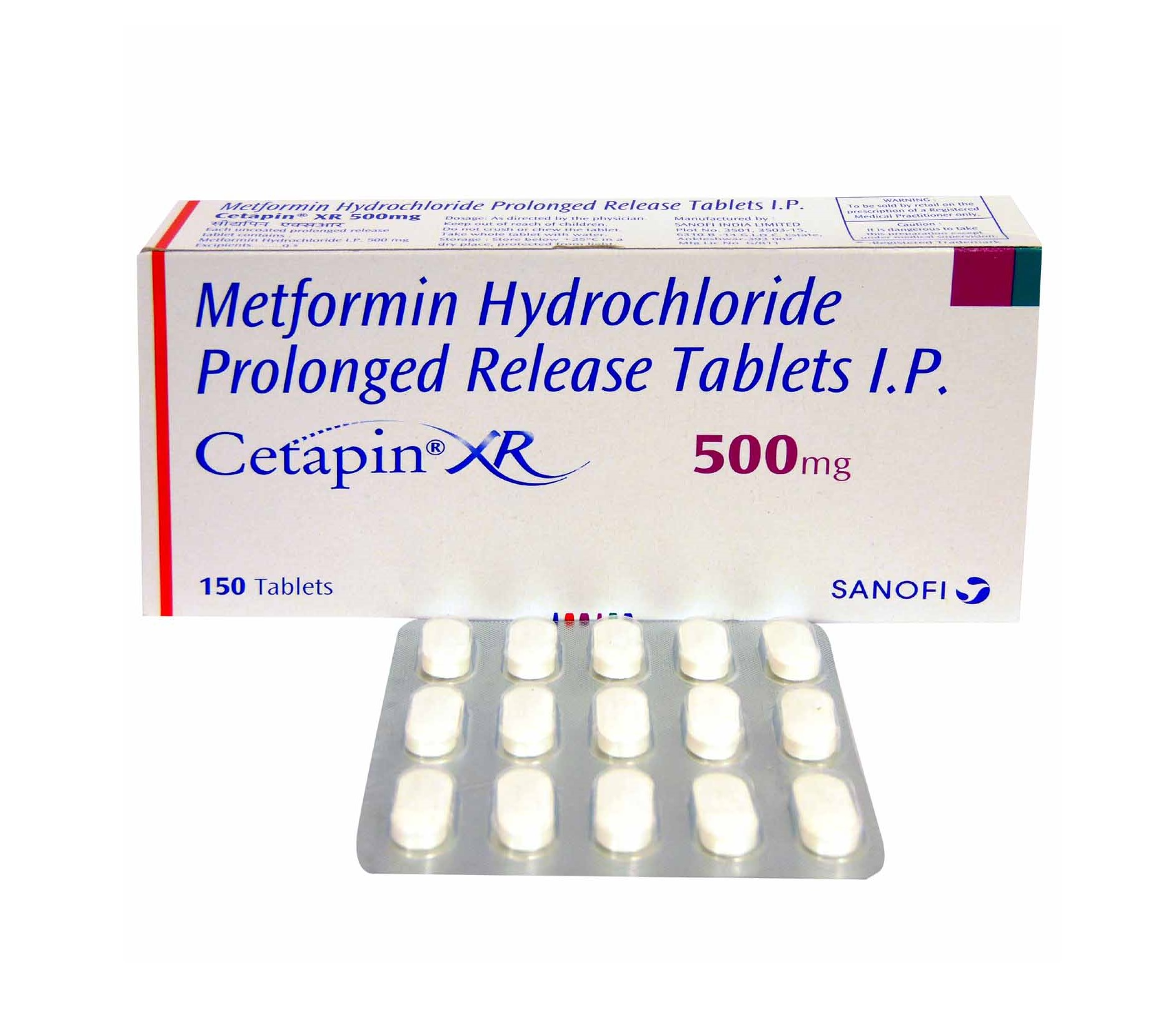Description
Metformin (Glucophage XR – Cetaphin XR) 500 mg tablet XL is an antihyperglycemic agent of the biguanide class used for the treatment of diabetes. It helps treat your diabetes by keeping your blood sugar in control.
Metformin is meant to be taken as part of a complete diabetes care program that should include exercise, a healthy diet, and regular monitoring of blood sugar levels.
Drug = Metformin
Strength = 500 mg
Manufacturer = Aventis
Quantity per sleeve = 200 Tabs (for the price quoted)
How To Take Metformin (Glucophage XR – Cetaphin XR) 500 mg Tablet XL
Take it together with food or immediately after a meal. Try to take it at the same time each day.
Metformin is available as a conventional tablet, extended-release tablet or oral solution.
If you are taking the conventional tablet, swallow it whole. Take it together with food or immediately after a meal.
If you are taking an extended-release type of tablet (usually labeled as “XL”, “ER”), swallow it whole. Do not divide, chew or crush the tablet. It is best to take it with the evening meal.
Take Metformin exactly as directed by your doctor or according to the instructions on the label. Do not take more or less than instructed by your doctor.
Dosage of Metformin (Glucophage XR – Cetaphin XR) 500 mg Tablet XL
As a conventional tab/solution: Initial: 500 or 850 mg twice a day or three times a day, gradually increase at intervals of at least 1 week according to response. Maximum: 3,000 mg/day in 3 divided doses.
As an extended-release tab: Initial: 500 mg/day with evening meal, increase dose in increments of 500 mg up to Maximum 2,000 mg/day according to response. Prophylaxis: As extended-release tab: Initial: 500 mg/day with evening meal, gradually increase dose at intervals of 10-15 days, according to response. Maximum: 2,000 mg/day with evening meal.
Missed Metformin (Glucophage XR – Cetaphin XR) 500 mg Tablet XL
If you often forget to take your medicine, let your doctor and pharmacist know.
Take the missed dose as soon as you remember. If it is almost time for your next dose, skip the missed dose and return to your usual dosing schedule.
Do not double a dose under any circumstances.
Overdose
Signs of overdose may include the following:
- Hypoglycemia
- Lactic acidosis manifested as acidotic dyspnea
- Abdominal pain
- Muscle cramps
- Hypothermia followed by coma
Seek medical help immediately.
Contraindications
People with the following medical conditions should not take Metformin:
- Acute or chronic metabolic acidosis with or without coma
- Dehydration
- Severe infection
- Shock
- Unstable cardiac or respiratory failure
- Recent myocardial infarction
- Acute alcohol intoxication or alcoholism
- Severe renal (eGFR<30 mL/min) impairment
- Intravascular administration of iodinated contrast agents
Side Effects of Metformin (Glucophage XR – Cetaphin XR) 500 mg Tablet XL
Metformin may have the following side effects:
- Vitamin B12 deficiency
- Chest discomfort
- Palpitations
- Dyspnea
- Nausea
- Vomiting
- Diarrhea
- Abdominal pain
- Flatulence
- Heartburn/dyspepsia
- Abdominal distention
- Abnormal stools
- Constipation
- Asthenia
- Flu-like symptoms
- Malaise
- Cholestatic, hepatocellular, mixed hepatocellular liver injury
- Myalgia
- Chills
- Taste disturbance
- Headache
- Increased somnolence
- Upper respiratory tract infection
- Nail disease
- Rash
- Flushing
Potentially Fatal:
- Lactic acidosis
Warnings of Metformin (Glucophage XR – Cetaphin XR) 500 mg Tablet XL
Do not use Metformin in people with the following conditions:
- Heart disease or recent heart attack
- Metabolic acidosis
- Liver disease
- Lung disease
- Severe kidney disease
- Excessive alcohol intake or alcohol addiction
- Undergo a radiology procedure involving iodinated contrast agents (dyes)
Inform your doctor and pharmacist if you are taking any of these medicines:
- Insulin
- Verapamil
- Ranolazine
- Captopril
- Losartan
- Hydrochlorothiazide
- Cimetidine
Always notify your doctor and pharmacist if you are taking any other medicines, including herbal tonics such as traditional Chinese medicines, supplements, and medicines that you buy without a prescription.
This list does not include all medicines that may interact with Metformin.
How Does It Work?
Metformin works by improving glucose tolerance by lowering both basal and postprandial plasma glucose. It decreases the production of hepatic glucose by inhibiting gluconeogenesis and glycogenolysis, delays the absorption of intestinal glucose, and improves insulin sensitivity by enhancing peripheral glucose uptake and utilization.
Uses
Metformin is used to treat the following conditions:
- Type 2 diabetes mellitus
Special Precautions and Connected Warnings
Take special precautions if you have the following conditions:
- Patients with risk factors for lactic acidosis
- Stable heart failure
- Dehydration
- Prerenal azotemia
- Mild to moderate renal impairment
- Hepatic impairment
- Children
- Elderly
- Pregnancy
- Lactation
- Not indicated for use in patients with type 1 diabetes mellitus or with diabetic ketoacidosis.
- Avoid alcohol
Storage Conditions
- Store below 30°C. Protect from light and moisture.
- Store in a cool, dry place away from the reach of children. Protect from light.
- Do not use Metformin that is expired or out of expiry date.


